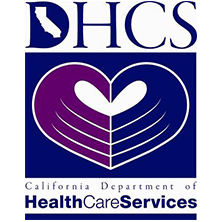When thinking about recovery from addiction, it’s not uncommon to think about the treatment program itself; evidence-based counseling, individual and group sessions, alternative therapies like yoga and things of that nature.
Before starting any of the important work of recovery though, there’s one critical step that precedes it all: detox.
The National Institute on Drug Addiction (NIDA) defines drug addiction as “a chronic, relapsing disorder characterized by compulsive drug seeking and use despite adverse consequences. It is considered a brain disorder because it involves functional changes to brain circuits involved in reward, stress, and self-control. Those changes may last a long time after a person has stopped taking drugs”.
It focuses on the mental aspects in the definition, which is what rehab helps you work through. However, while addiction is defined as a brain disorder it’s also physically addictive. Your body has come to depend on drugs or alcohol to function “normally”.
In a very real sense, your body is hooked and the longer you abuse drugs or alcohol the more of a tolerance you build meaning you need to take ever-increasing amounts to get the same effect as before.
Breaking that physical addiction first is mission-critical.
What Is Detox in Addiction Recovery?
Detox is the first step on the path of recovery.
Once you’ve decided to commit to recovery, the first thing you’ll do is go through detoxification which is just the process of your body ridding itself of toxins – i.e., the drugs and/or alcohol.
You may be thinking to yourself, can’t I just detox on my own and then seek treatment?
Sure, it’s technically possible and people can and do accomplish it, but it is tough and it’s rough.
Moreover, depending on the substance you’re addicted to and the severity of that addiction, detox can actually be fatal. Severe withdrawal symptoms from alcohol, known as delirium tremens, can end in death and detoxing from drugs like benzodiazepines can also kill.
Aside from the risk of death, detox is uncomfortable by its very nature. Your body is craving substances and you’re withholding them, that’s the concept. The consequence is that the withdrawal symptoms can last from a few days to multiple weeks.
That’s why going through detox – be it sub-acute, residential or medical detox – under the caring, supportive and watchful eye of trained addiction specialists helps immeasurably. They’ll monitor you 24/7 and work to alleviate as much of the discomfort of withdrawal as possible.
Licensed professionals are also well versed in what to expect and can guide you through the journey.
So how does detox work exactly?
The Detox Process
The first order of business is a thorough medical assessment and a detailed breakdown of your addiction. Knowing all of this creates an accurate and complete view of what’s going on in your life and directly informs the detox plan that’s designed and developed specifically for you.
From there it’s all about support, monitoring and care while the detoxification runs its course.
This is the point at which withdrawal begins and as mentioned above, comes with discomfort. Medical detox works to ensure your safety and alleviate as much of the difficulty of withdrawal as possible by having it supervised by a trained medical team.
Symptoms of withdrawal can include things like:
- Nausea
- Vomiting
- Insomnia
- High temperature
- Increased heart rate and/or blood pressure
- Anxiety
- Mood swings
- Paranoia
- Confusion
- Agitation
- Sweating
- Diarrhea
- Muscle aches
Depending on what you’re detoxing from and if the withdrawal is hitting you particularly hard, medication-assisted detox may be an appropriate and effective route for you.
Once you’re in the clear, so to speak, you’ll transition to your individualized treatment program to begin work on the mental aspects of addiction.
To learn more about detox, or any part of the recovery process, get in touch with us at Safe Harbor.




